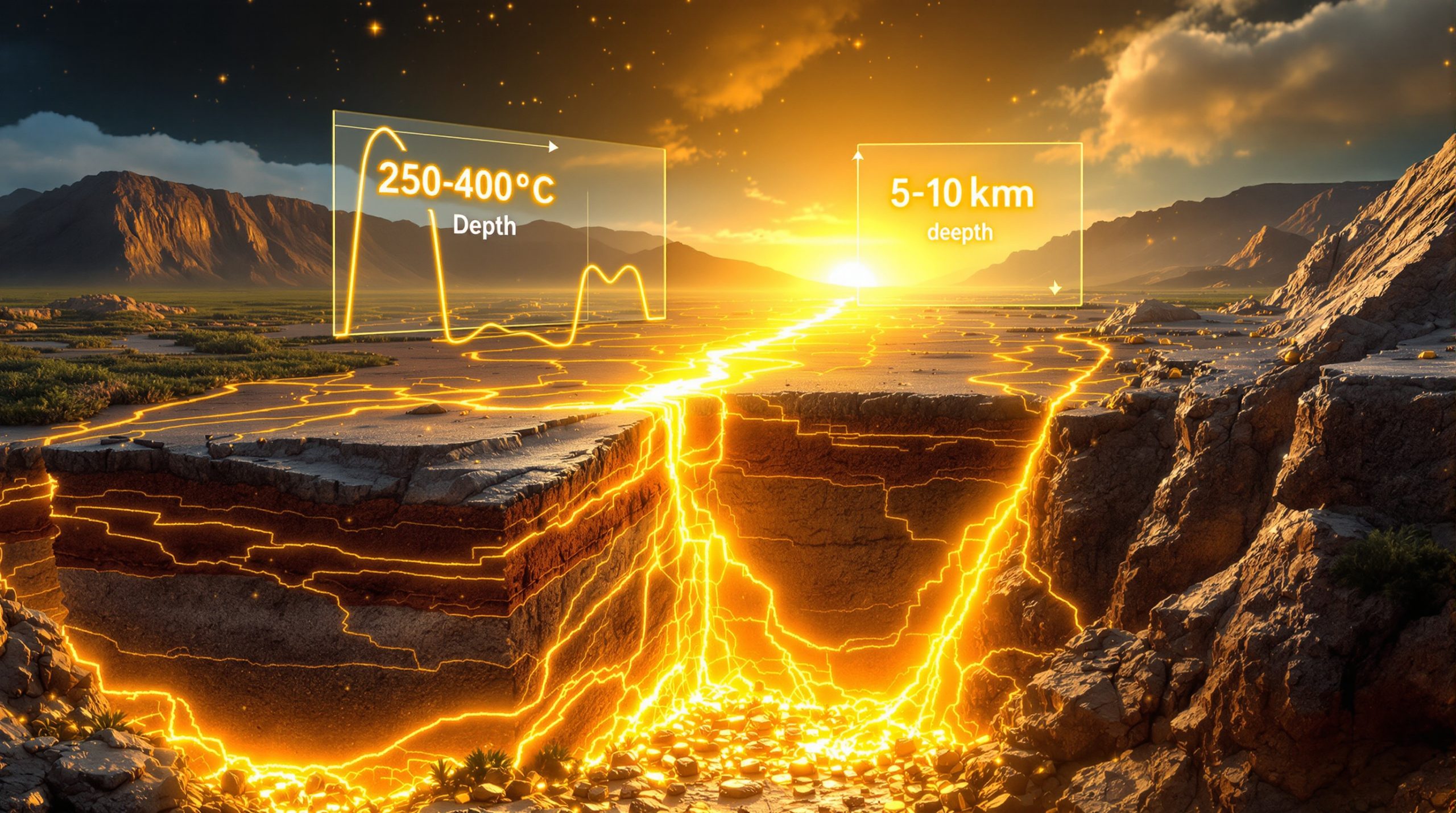Understanding the Global Competition for Critical Minerals
The contemporary struggle for rare earth elements represents a fundamental shift in how nations approach economic security and technological sovereignty. The rare earths arms race differs from traditional resource competitions focused primarily on energy or basic materials, as this contest centres on elements that enable advanced manufacturing, defence systems, and clean energy infrastructure. Furthermore, critical minerals energy security has become a cornerstone of national strategic planning.
According to the U.S. Geological Survey, rare earth elements consist of 17 chemically similar elements with unique atomic structures that provide distinctive magnetic, luminescent, and catalytic properties essential for high-technology applications. These elements are subdivided into light rare earth elements (LREEs) and heavy rare earth elements (HREEs), each serving different industrial purposes.
What Defines the Modern Rare Earths Arms Race?
The rare earths arms race differs markedly from traditional commodity competitions due to several unique characteristics:
Supply Chain Concentration: Geographic clustering of production and processing creates asymmetric geopolitical leverage. The International Energy Agency has identified rare earth separation and refining as one of the most concentrated industrial processes globally, with processing capabilities heavily consolidated in specific regions.
Technical Complexity: Rare earth separation requires sophisticated chemical processes that cannot be easily replicated. The extraction and purification of individual rare earth elements involves multi-stage solvent extraction systems, specialised equipment, and extensive environmental controls.
Strategic Applications: Modern defence systems, renewable energy infrastructure, and consumer electronics depend on rare earth elements for functionality. Consequently, supply security becomes a national security consideration rather than purely an economic issue. Additionally, the European CRM facility represents one attempt to address these vulnerabilities.
How China Achieved Market Dominance in Rare Earth Elements
China's commanding position in global rare earth markets emerged through decades of strategic planning, substantial capital investment, and integrated supply chain development. Current data from the U.S. Geological Survey indicates China maintains significant control over global rare earth production and processing capabilities.
The Foundation of Chinese Control
China's market dominance stems from several interconnected factors that created sustainable competitive advantages:
Resource Endowment: China possesses substantial rare earth reserves, particularly at the Bayan Obo deposit in Inner Mongolia, which contains both light and heavy rare earth minerals within iron ore operations. This geological advantage provided the foundation for industrial development.
Strategic Integration: Chinese authorities directed the consolidation of mining, processing, and manufacturing operations under state influence. This enabled coordinated supply chain development and long-term strategic planning that private market participants found difficult to match.
Environmental Tolerance: Lower environmental standards during earlier development phases enabled cost-competitive production methods that would face regulatory restrictions in Western jurisdictions. This created lasting cost advantages that persist despite gradual environmental standard improvements.
Long-term Capital Commitment: Government-backed financing supported rare earth operations through commodity price downturns when private investors might have withdrawn capital. For instance, this maintained production capacity and technical expertise throughout market volatility.
| Market Segment | Estimated Chinese Control | Strategic Impact |
|---|---|---|
| Global Mining Operations | Approximately 70% | Primary supply control |
| Processing and Refining | Near 90% | Value-added manufacturing dominance |
| Permanent Magnet Production | Over 85% | End-product market control |
| Heavy Rare Earth Elements | Estimated 95% | Critical defence application leverage |
Source: U.S. Geological Survey Mineral Commodity Summaries and International Energy Agency Critical Minerals Market Review
Strategic Export Controls as Geopolitical Tools
Beijing's use of export restrictions demonstrates how supply chain control translates into diplomatic leverage. China's Ministry of Commerce has implemented various export control measures on rare earth materials and processing technologies, creating supply uncertainty for international manufacturers.
Recent policy developments include restrictions on rare earth processing technology transfers and licensing requirements for certain strategic materials. These measures signal China's willingness to use supply chain dependencies as tools of statecraft.
The elements subject to various forms of export oversight include materials crucial for advanced defence systems, medical imaging equipment, and precision manufacturing applications. This creates particular vulnerabilities for Western defence contractors and technology manufacturers. Moreover, the global race for critical minerals has intensified these concerns across multiple nations.
How Western Nations Are Responding to Supply Chain Vulnerabilities
Recognition of rare earth supply chain vulnerabilities has prompted comprehensive policy responses from Western governments. These combine financial incentives, strategic partnerships, and regulatory reforms to reduce dependence on concentrated supply sources.
United States Strategic Initiatives
The current administration has continued and expanded critical minerals initiatives originally developed under previous leadership, utilising multiple policy tools to accelerate domestic production capabilities. In particular, the executive order on minerals demonstrates this commitment.
Defence Production Act Implementation: The administration has invoked Defence Production Act authorities to accelerate rare earth production capacity. This provides direct government support for facility construction and equipment procurement, including partnerships with MP Materials Corporation for Mountain Pass processing expansion and strategic investments in separation technology development.
Critical Minerals Tax Incentives: The Inflation Reduction Act allocated substantial funding for clean energy investments, including specific provisions for domestic critical minerals processing. These incentives target the development of separation and refining capabilities rather than just mining operations.
Strategic Reserve Development: Plans for establishing a National Rare Earths Reserve follow precedents from the Strategic Petroleum Reserve. However, implementation details regarding storage requirements, release protocols, and inventory targets remain under development.
Current U.S. Market Position:
- Domestic refining capacity: Less than 5% of global output
- Heavy rare earth separation: Minimal existing capability
- Strategic partnerships: Expanding with allied nations
- Permitting acceleration: Active across multiple development projects
Source: U.S. Geological Survey and Department of Defence Strategic Documentation
The Reality Behind "Mine, Baby, Mine" Policies
While political rhetoric emphasises rapid domestic production increases, the technical and financial realities of establishing competitive rare earth operations present substantial challenges. These cannot be overcome through policy declarations alone.
Processing Infrastructure Gap: The United States maintains mining capacity at facilities like Mountain Pass in California, but lacks comprehensive domestic processing capabilities. New rare earth separation facilities require 3-5 years for construction and commissioning, with environmental permitting adding additional timeline requirements.
Environmental and Community Considerations: Rare earth mining and processing generate significant environmental impacts. These include radioactive thorium waste management, acid mine drainage, and water contamination risks. Consequently, these factors create sustained community opposition affecting permitting timelines and operational costs.
Capital Requirements: Establishing economically viable rare earth processing infrastructure requires hundreds of millions in capital investment per facility. Furthermore, returns remain uncertain given commodity price volatility and international competition.
Technical Reality Check: The complexity of rare earth separation cannot be understated. Converting raw ore to individual rare earth elements requires multi-stage chemical processes involving hydrochloric or sulfuric acid leaching, selective solvent extraction, precipitation, and purification steps.
Why This Competition Extends Beyond Simple Resource Extraction
The rare earths arms race encompasses broader strategic considerations including technology transfer, industrial espionage concerns, and military applications. These factors elevate the competition beyond traditional commodity market dynamics.
Technology Transfer and Industrial Espionage Concerns
Advanced rare earth processing techniques, magnet manufacturing methods, and recycling technologies represent valuable industrial knowledge that nations seek to protect or acquire. The Carnegie Endowment for International Peace has documented how rare earth supply chain dependencies intersect with concerns about intellectual property protection and technology transfer requirements.
Western companies operating in partnership arrangements with Chinese entities face complex decisions regarding technology sharing, joint venture structures, and intellectual property safeguards. These arrangements often involve trade-offs between market access and technological security. Additionally, modern mining technology plays a crucial role in these competitive dynamics.
Defence Applications Driving Strategic Importance
Modern military systems depend extensively on rare earth elements for critical functionality, making supply security a matter of national defence rather than industrial convenience. Moreover, heavy rare earths in defence systems represent a particularly critical vulnerability.
Military Applications by Element Category:
| Element Type | Primary Defence Uses | Strategic Criticality |
|---|---|---|
| Neodymium | Missile guidance systems, radar equipment | Essential for precision weapons |
| Dysprosium | High-temperature permanent magnets | Critical for advanced propulsion systems |
| Europium | Night vision equipment, display systems | Crucial for surveillance capabilities |
| Yttrium | Laser systems, advanced ceramics | Key for directed energy weapons |
| Holmium | Nuclear reactor control rods | Important for naval propulsion |
Source: U.S. Department of Energy Critical Materials Strategy and Defence Department Technical Reports
The Department of Defence has identified rare earth elements as materials of strategic importance for maintaining technological superiority in defence applications. This classification drives government investment decisions and partnership priorities across the defence industrial base.
What Investment Implications Emerge from This Competition
The transformation of rare earth markets from commodity-driven to policy-driven dynamics creates new investment considerations. Traditional market analysis frameworks may not adequately capture these changes.
Policy-Driven Market Dynamics
Government intervention now drives demand and supply decisions more than traditional economic factors. This requires investment strategies that account for regulatory changes, diplomatic tensions, and strategic stockpiling programmes rather than purely financial metrics.
Volatility Sources:
- Export control announcements from producing nations
- Government funding allocation decisions
- Trade dispute escalations
- Strategic partnership developments
- Environmental regulatory changes
Investment decisions must incorporate geopolitical risk assessment alongside traditional financial analysis. Policy announcements can create significant price movements independent of underlying supply-demand fundamentals.
Mid-Stream Processing Opportunities
While mining operations capture media attention, the greatest value creation and strategic importance often occurs in processing and refining stages. Companies capable of separating, purifying, and transforming raw rare earth concentrates into usable materials occupy critical supply chain positions.
Processing Value Chain Components:
- Ore concentration and beneficiation
- Chemical leaching and dissolution
- Selective separation and purification
- Individual element precipitation
- Alloy and magnet manufacturing
- Recycling and material recovery
Each stage requires specialised technical expertise, environmental controls, and substantial capital investment. These create barriers to entry that can support higher margins for successful operators.
How Long-Term Structural Changes Will Unfold
The rare earths arms race represents a decade-long structural transformation rather than a short-term competitive sprint. Timeline realities differ significantly from political rhetoric and investment marketing messages.
Timeline Realities Versus Political Promises
Despite political urgency and financial commitments, establishing competitive rare earth supply chains faces multi-year development requirements. These cannot be compressed beyond certain technical and regulatory limits.
Development Timeline Factors:
- Environmental impact assessments: 12-24 months
- Facility design and engineering: 18-30 months
- Construction and commissioning: 24-36 months
- Production ramp-up and optimisation: 12-18 months
- Total project timeline: 5-8 years minimum
These timelines assume favourable regulatory environments and adequate financing availability. Delays in permitting, community opposition, or technical challenges can extend development periods significantly.
Recycling and Alternative Material Development
Long-term supply security increasingly depends on developing circular economy approaches to rare earth utilisation. This reduces dependence on primary mining through improved recovery and reuse technologies.
Urban Mining Opportunities:
- Electronic waste contains concentrated rare earth materials
- End-of-life electric vehicle magnets represent significant recovery potential
- Industrial process waste streams offer recycling opportunities
- Defence equipment retirement creates material recovery possibilities
Recycling technologies face technical challenges including material separation complexity, contamination issues, and economic viability compared to primary production costs. However, government support and regulatory requirements may improve recycling economics over time.
Where Opportunities and Risks Intersect for Stakeholders
The rare earths arms race creates both opportunities and risks for various stakeholders, from individual investors to multinational corporations to government agencies responsible for strategic planning.
Volatility as the New Normal
Market participants must prepare for continued price volatility driven by policy announcements, trade disputes, and supply disruption concerns. This differs from traditional demand-supply dynamics.
Risk Management Considerations:
- Diversified supply source development
- Strategic inventory management
- Long-term contract structures
- Alternative material research investments
- Political risk insurance evaluation
Traditional commodity market analysis becomes less relevant when government intervention drives price discovery mechanisms and allocation decisions.
Regional Diversification Strategies
Companies and nations are pursuing supply diversification through partnerships with producers in Africa, Australia, and South America. However, processing capacity development remains the critical constraint regardless of mining location.
Diversification Challenges:
- Processing infrastructure requirements
- Technical expertise availability
- Environmental regulatory compliance
- Transportation and logistics costs
- Political stability assessments
Successful diversification requires integrated approach combining mining, processing, and manufacturing capabilities rather than focusing solely on resource extraction.
Investment Strategy Considerations for the Rare Earths Arms Race
Investors approaching rare earth opportunities must balance strategic importance against technical execution risks, regulatory uncertainties, and extended development timelines.
Investment Themes to Monitor:
- Mid-stream processing technology developers
- Recycling and urban mining capabilities
- Alternative material research companies
- Strategic partnerships with government backing
- Integrated supply chain operators
Due diligence requirements extend beyond traditional financial metrics to include technical feasibility assessments, regulatory compliance evaluation, and geopolitical risk analysis.
Market Psychology and Competitive Dynamics
The rare earths arms race exhibits unique psychological characteristics that differentiate it from other commodity competitions. Strategic considerations often override pure economic optimisation.
Psychological Factors:
- National security concerns drive decision-making
- Supply chain vulnerabilities create urgency
- Geopolitical tensions amplify price sensitivity
- Strategic stockpiling decisions affect market dynamics
- Long-term planning horizons versus short-term pressures
Understanding these psychological elements becomes crucial for predicting market behaviour and investment outcomes in policy-driven markets.
Frequently Asked Questions About the Rare Earths Arms Race
Is the "arms race" terminology accurate for describing current competition?
The military metaphor captures the strategic importance and competitive intensity surrounding rare earth supply chains. However, the actual competition involves economic policy, trade relationships, and industrial development rather than direct military conflict. The terminology reflects the strategic nature of the competition and the involvement of defence applications.
How quickly can Western nations achieve meaningful supply chain diversification?
Complete independence from concentrated supply sources remains unrealistic within the current decade. Nevertheless, meaningful diversification and reduced vulnerability are achievable through sustained investment and policy coordination. Success requires maintaining political commitment across multiple election cycles and economic conditions.
What role do private companies play in this strategic competition?
Private enterprises execute the actual mining, processing, and manufacturing activities, but increasingly operate within frameworks shaped by government policy, funding priorities, and strategic objectives. The traditional private sector/government boundary becomes blurred when national security considerations drive commercial decisions.
Which market segments offer the most attractive investment opportunities?
Mid-stream processing and separation capabilities represent potentially attractive opportunities given their strategic importance and high barriers to entry. Recycling technologies and alternative material development also merit consideration for long-term value creation.
Investment Disclaimer: Rare earth investments involve substantial risks including commodity price volatility, regulatory uncertainty, geopolitical tensions, and extended development timelines. Potential investors should conduct thorough due diligence and consider their risk tolerance before making investment decisions.
Conclusion: Beyond the Headlines to Structural Reality
The characterisation of rare earth competition as an arms race contains fundamental truth while necessarily simplifying complex realities. China's market dominance reflects decades of integrated development that cannot be quickly replicated, while Western responses involve substantial but gradual supply chain restructuring efforts.
The transformation from market-driven to policy-driven commodity dynamics represents a permanent shift that requires new analytical frameworks. These are needed for understanding price discovery, allocation mechanisms, and investment opportunities. Traditional commodity market analysis provides limited guidance when strategic considerations override economic optimisation.
Success in this competition will ultimately depend on sustained commitment to long-term capacity building rather than short-term political gestures or investment speculation. The winners will be entities that maintain consistent development focus through multiple political and economic cycles whilst managing the technical, financial, and regulatory challenges inherent in rare earth operations.
Key Strategic Realities:
- Supply chain transformation requires decade-long commitment
- Processing capabilities matter more than mining capacity
- Government policy now drives market dynamics
- Technical execution determines commercial success
- Geopolitical risk assessment becomes essential for investment decisions
The rare earths arms race will likely intensify in the coming years as strategic competition continues and technology applications expand. However, the structural adjustment period required for meaningful supply chain diversification extends well beyond single-year investment cycles or political timelines.
Understanding this timeline distinction becomes crucial for realistic policy planning, investment decision-making, and strategic business planning across industries dependent on rare earth supply chains. The competition is real and consequential, but success will be measured in decades rather than quarters.
Looking to Capitalise on Critical Minerals Market Opportunities?
The rare earths arms race highlights the strategic importance of mineral discoveries in an increasingly competitive global landscape. Discovery Alert's proprietary Discovery IQ model delivers real-time alerts on significant ASX mineral discoveries, instantly empowering subscribers to identify actionable opportunities ahead of the broader market whilst policy-driven dynamics reshape commodity markets. Begin your 30-day free trial today at Discovery Alert and secure your market-leading advantage.




